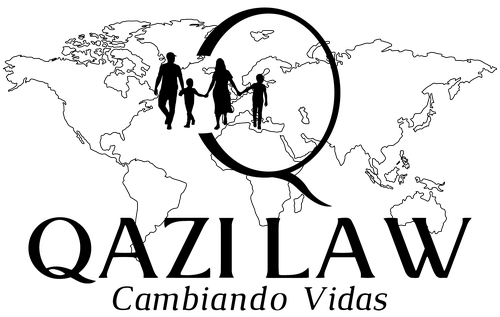Fear of persecution is one of the biggest reasons people migrate from their home countries and seek safety abroad, according to The UN Refugee Agency UNHCR. In 2022 there were 82.4 million forcibly displaced people around the world, and the main cause of migration was food insecurity, poverty, climate change, and fleeing situations of violence or persecution.
The foundations of the formation of America are under this same precept of migration. Many settlers, 400 years ago, came to the US fleeing persecution, mostly religious, who lived in the UK. A clear example of these religious groups is the Puritans, who landed in Cape Cod in search of a better future free from the religious persecution they suffered in England. When they arrived on what are now the coasts of Massachusetts, they saw the opportunity to prosper economically, but also to be free from the fear in which they lived in the UK.
Currently, the migratory movements in the American continent are presented mainly by the poverty and insecurity of Latin America. The National Council for the Evaluation of Social Development Policy of Mexico, CONEVAL, estimates that in 2020, 52.8% of the population was below the poverty line, and 17.2% was below the extreme poverty line. Despite these percents, a significant percentage of migrants indicate that their reason for moving is not poverty, but rather a legitimate fear of returning to their countries due to the violence in Mexico.
Violence in Mexico has been a generational problem; The smuggling of migrants, drugs, and people into the US has turned Mexico into an area that must face problems of violence that seem to be out of control. In 2006, then-President Felipe Calderon began the so-called “War against El Narco”, in an attempt to reduce the uncontrolled violence that has been experienced in Mexico ever since. Now, 16 years later, the war seems to have no end, leaving a bleak picture for Mexicans.
The Inter-American Commission on Human Rights, IACHR, in its report, “The Situation of Human Rights in Mexico” indicated that among the main actors of violence in Mexico are organized crime, generating situations of extreme violence, murders, and forced disappearances. This violence has left since 2019, 132,088 people murdered, and similar figures of disappeared. Only during the month of March 2022, there were 3,600 murders, that is, 120 people per day were murdered. In addition, in that same month, 4,000 disappeared were reported. These figures cannot be compared even with countries that are currently at war, and it should be noted that 95% of the crimes went unpunished.
It is estimated that 42 million people live in the most violent states of Mexico, (Guanajuato, Michoacán, State of Mexico, Baja California, Jalisco, and Sonora), this is a third of the Mexican population. There are many towns or areas so besieged by drug trafficking that people must get used to living in a zone of constant war, or escape. But when the entire country is at war, the options of where to run are limited.
A clear example of the desperate situation that millions of Mexicans are experiencing is the one in Aguililla, Michoacan. Aguililla is a small town where murders and shootouts between drug traffickers fighting for territory are so frequent that the population has had to get used to hearing the gunshots for hours. In addition, the town has been under siege for several years, and no one can enter or leave unless authorized by the drug traffickers. This situation has prevented farmers from removing their crops from the sector, and as a consequence, the population suffers from economic and food shortages. According to a report made in Aguililla by the BBC in August 2021, 50% of the population, approximately 8,000 people, have emigrated from the small town in recent years, and between 800 and 900 people requested letters of recommendation from the town’s parish to present in their applications for asylum, mostly in the US. Unfortunately, the situation in Aguililla is repeated throughout the country, while the war against drug traffickers does not seem to have an end.
The crisis in Mexico has quickly moved to the American border, where thousands of Mexicans are fleeing in search of Asylum. An estimated 94,000 applied for asylum in The US in 2016, an alarming number compared to 5,000 applicants in 2009.
However, despite the humanitarian crisis that our neighbors are experiencing, when they try to emigrate to the US in search of asylum and protection, they encounter migratory barriers that seem impossible to address, especially when it is considered that fleeing violence is not a justified cause for an asylum application.
A clear example of this is what happened in 2018 when Attorney General Jeff Sessions dismissed cases of fears of domestic abuse or gang violence as a reason to request asylum in the US. Mr. Session says, “An alien may suffer threats and violence in a foreign country for any number of reasons relating to her social, economic, family or other personal circumstances,” he added. “Yet the asylum statute does not provide redress for all misfortune.” And also, “Generally, claims by aliens pertaining to domestic violence or gang violence perpetrated by non-governmental actors will not qualify for asylum.”
Another obstacle faced by migrants has been the immigration policy known colloquially as Title 42, which came into force in March 2020. This policy allowed immigration officials to deport migrants without the opportunity to apply for asylum under the justification of being a risk for health due to the emergency of the COVID-19 pandemic. The law, which has been considered inhumane, has given rise to much criticism and was finally repealed in April 2022.
These obstacles make the migration crisis intensify when thousands of people escape from Mexico but are unable to regulate their immigration status. On the contrary, they are more likely to experience other types of border violence while crossing illegally or to be victims of human trafficking.
Every day, thousands of migrants arrive at the border between Mexico and the US. Migrants from all over the world seek safety in The US, but while the humanitarian crisis in their countries does not end, the situation does not seem to have an end in the near future.
Do you seek asylum in The US? Call our office, we might be able to help. Call us at 630 504 0648.

